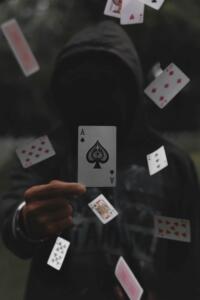Table of Contents

Farkle is a classic dice game that combines elements of risk, strategy, and luck. With a simple setup and easy-to-learn mechanics, it’s become a go-to option for casual game nights, family gatherings, and group play.
Introduction to Farkle
Farkle is a turn-based game played with six standard six-sided dice. The primary objective is to be the first player to reach a target score, usually 10,000 points. Points are earned by rolling certain combinations, and players must decide whether to bank their points or roll again and risk losing them.
The game likely originated in the United States sometime in the 20th century, though its exact origins are unclear. It shares similarities with other dice-based games like Ten Thousand or Zilch. There is no official “ownership” or proprietary version of the game, which contributes to its many rule variants.
Understanding Farkle Rules
Each turn starts with a roll of all six dice. After rolling, players must set aside at least one scoring die (or combination) before deciding to either “bank” their points or roll the remaining dice again. If a player rolls and scores no points, it’s called a Farkle, and their turn ends with no points gained for that round.
Here’s how basic scoring works:
- Single 1s: 100 points each
- Single 5s: 50 points each
- Three of a kind:
- 1s = 1,000 points
- 2s–6s = 100 × face value (e.g., three 4s = 400)
- Four of a kind: 2× the points of three of a kind
- Five of a kind: 3× the points of three of a kind
- Six of a kind: 4× the points of three of a kind
- Straight (1–6): 1,500 points
- Three pairs: 1,500 points
- Two triplets: 2,500 points
Players must score at least 500 points in a single turn to get on the board. After that, they can bank any amount over zero.
For example, if you roll 1-1-5-2-3-6, you could set aside the two 1s (200 points) and the 5 (50 points) for 250 total. You’d then decide whether to roll the remaining three dice or bank the 250 points.
Farkle Strategies
Deciding when to bank or keep rolling is essential. More dice mean better chances of scoring, but rolling with two dice gives about a 50% chance of Farkling. Many players choose the strategy of banking once they’re down to two dice unless they’re far behind. Since 1s are worth 100 points and 5s only 50, it’s usually better to set aside 1s first to maximise scoring potential. For example, with a roll of 1-5-2-3-6-6, keeping just the 1 is often more efficient. To start scoring, you need 500 points, so bank early to get on the board.
Advanced Strategies
Understanding which dice combinations are likely to score helps avoid unnecessary Farkles. Rolling four dice gives about an 85% chance of scoring; three dice around 65%, two dice 45%, and one die just 17%. Use these stats instead of guessing.
Score chaining means keeping some scoring dice while rerolling others to maintain chances. For example, with 1-1-1-5-5-6, you might keep the 1s and reroll the rest. In multiplayer games, watch how others play- if they’re cautious, you might take more risks; if they’re aggressive, playing safe could pay off by letting their mistakes work in your favor.
Playing with Hot Dice
“Hot dice” refers to situations when all six dice score in a single turn. When that happens, you’re allowed to roll all six dice again and continue your turn.
For example, if you roll 1-1-5-5-5-1, you’ve scored using all six dice (two 1s = 200, three 5s = 500, another 1 = 100). That’s 800 points and a fresh chance to roll all six again.
Hot dice can lead to major scoring spikes, especially if used wisely. However, they also pose a greater risk of Farkling on the next roll.
Multiplayer Farkle
The game can be played with two or more players, though 3–6 tends to be ideal for balance and pace. Multiplayer dynamics add several layers:
- Turn Pressure: As others get closer to the winning score, players are forced into more aggressive choices.
- Tactical Banking: Sometimes it’s smarter to bank a modest amount just to secure points and keep pressure on the next player.
- Score Tracking: Keep track of opponents’ scores, especially late in the game. If someone is within 1,000–2,000 points of winning, it might be worth playing more aggressively or cautiously, depending on the situation.
Optional house rules like “exact finish” (where players must land exactly on 10,000) can add more tension and balance.
FAQs
How do you play Farkle?
Players take turns rolling six dice to earn points from specific combinations. After each roll, at least one scoring die must be set aside or the turn ends with zero points (a Farkle).
Is Farkle just Yahtzee?
No. While both use six dice, Farkle focuses on risk-taking and point banking. Yahtzee relies on filling a scorecard with fixed combinations.
What does Farkle mean in slang?
Within the game, it means a roll that results in no points. Outside the game, the word has no widely accepted slang meaning.
What the heck is Farkle?
It is a push-your-luck dice game involving scoring combinations and decision-making. It’s easy to learn and often played in groups or digitally.



